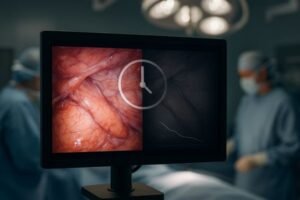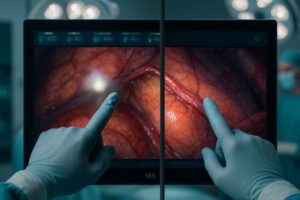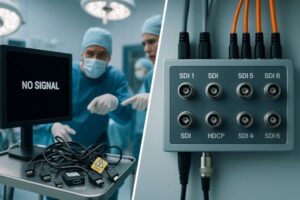Veterinary surgeons face demanding visual challenges. Poor image quality can hinder procedures. Can our surgical monitors meet the unique needs of animal patients and their caregivers?
Yes, Reshin surgical monitors are highly suitable for veterinary surgical environments. They offer the necessary image clarity, durability, and specialized features to support a wide range of animal surgeries, enhancing procedural accuracy and workflow efficiency.
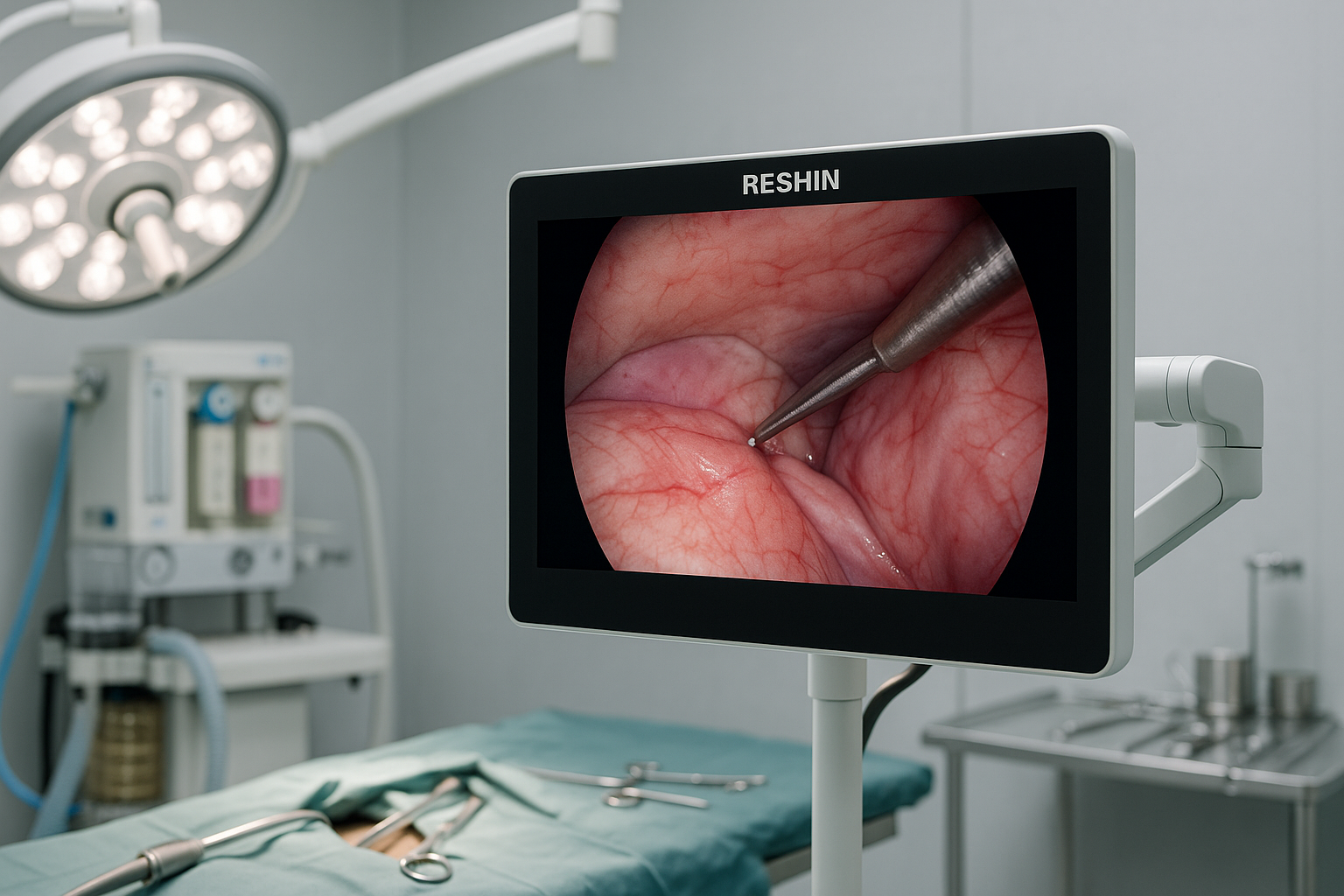
The decision to equip a veterinary operating room involves careful consideration of technology that can withstand unique challenges while providing clear, reliable visuals. This article explores how our surgical monitors meet the specific demands of veterinary medicine, from imaging non-human anatomy to enduring the rigors of the animal care environment. We will examine the features that make these displays a valuable asset for veterinary surgical teams.
What are the visual and technical demands of veterinary surgeries?
Complex animal surgeries leave no room for error. Subpar visuals can lead to misinterpretations. How can displays meet these high stakes for diverse animal patients?
Veterinary surgeries, including laparoscopy, orthopedics, and dental work, demand high-resolution, high-contrast, and low-latency displays. These requirements are very similar to those in human surgical settings, ensuring precise visualization for delicate tasks.
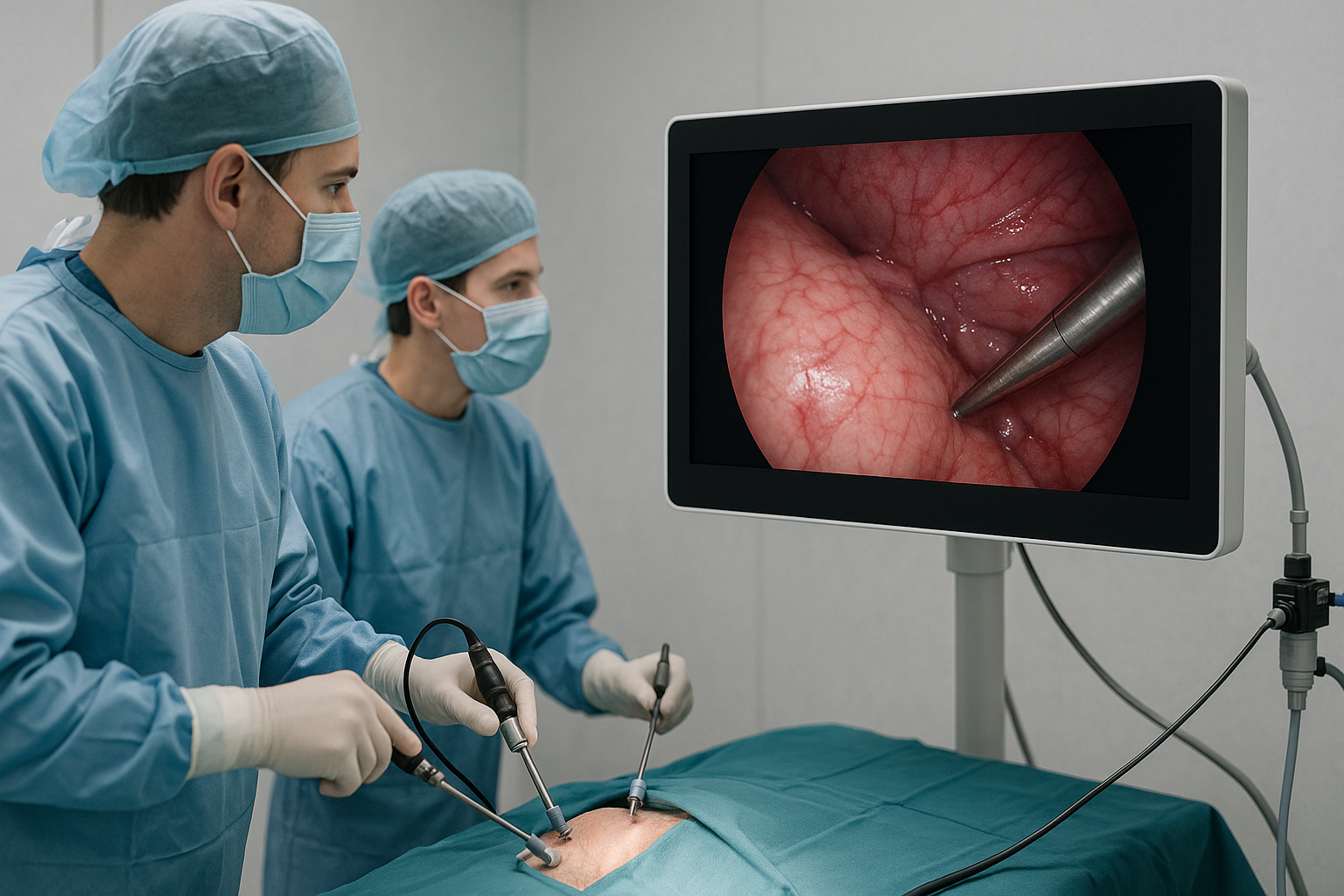
The visual and technical demands in veterinary surgery are indeed stringent. Surgeons often work with very small or complex anatomical structures, requiring exceptional detail and clarity from their imaging systems. For instance, during an endoscopic procedure on a small mammal, every vessel and tissue plane must be clearly discernible. This necessitates monitors with high pixel density1 to render fine details accurately. Furthermore, high contrast ratios are essential for distinguishing between different types of tissues, especially when dealing with subtle pathological changes. Color accuracy is also paramount, as it helps in identifying healthy versus diseased tissue, or in assessing blood flow. Low latency is critical because any delay between the surgeon’s actions and the visual feedback on the screen can compromise precision and safety. These demands are consistent across various veterinary specialties, whether it’s an orthopedic surgeon visualizing a fracture repair or a neurologist navigating delicate spinal structures. The ability to see clearly, without distortion or delay, directly impacts the surgeon’s confidence and the procedure’s outcome.
Key Visual Requirements
Veterinary procedures often involve diverse patient sizes and anatomical variations. This means a monitor must perform reliably across different scenarios.
- Resolution: Sufficient pixel density is needed to see fine details in animals ranging from small exotics to large companion animals.
- Contrast: The ability to differentiate subtle tissue variations is crucial for diagnosis and precise surgical intervention.
- Color Accuracy: True-to-life color representation helps in identifying anatomical landmarks and pathological changes.
Essential Technical Specifications
Beyond visual quality, technical performance ensures seamless integration and reliability.
- Low Latency: Real-time image display is non-negotiable for hand-eye coordination during surgery.
- Input Compatibility: Monitors must connect with various imaging modalities like endoscopes, C-arms, and ultrasound machines commonly found in veterinary practices.
- Brightness and Anti-Glare: Sufficient brightness and effective anti-glare properties are needed for clear visibility under bright OR lights.
These combined visual and technical capabilities ensure that veterinary surgeons have the tools they need for optimal patient care.
How does the Reshin surgical monitor adapt to non-human anatomy imaging?
Visualizing animal anatomy presents unique challenges. Standard displays might not capture nuances. How do our monitors address these specific imaging needs for diverse species?
Reshin surgical monitors, with features like up to 4K resolution and DICOM Part 14 grayscale compatibility, accurately render soft tissue and fine anatomical details in animals. This makes them ideal for visualizing endoscopic or ultrasound feeds.
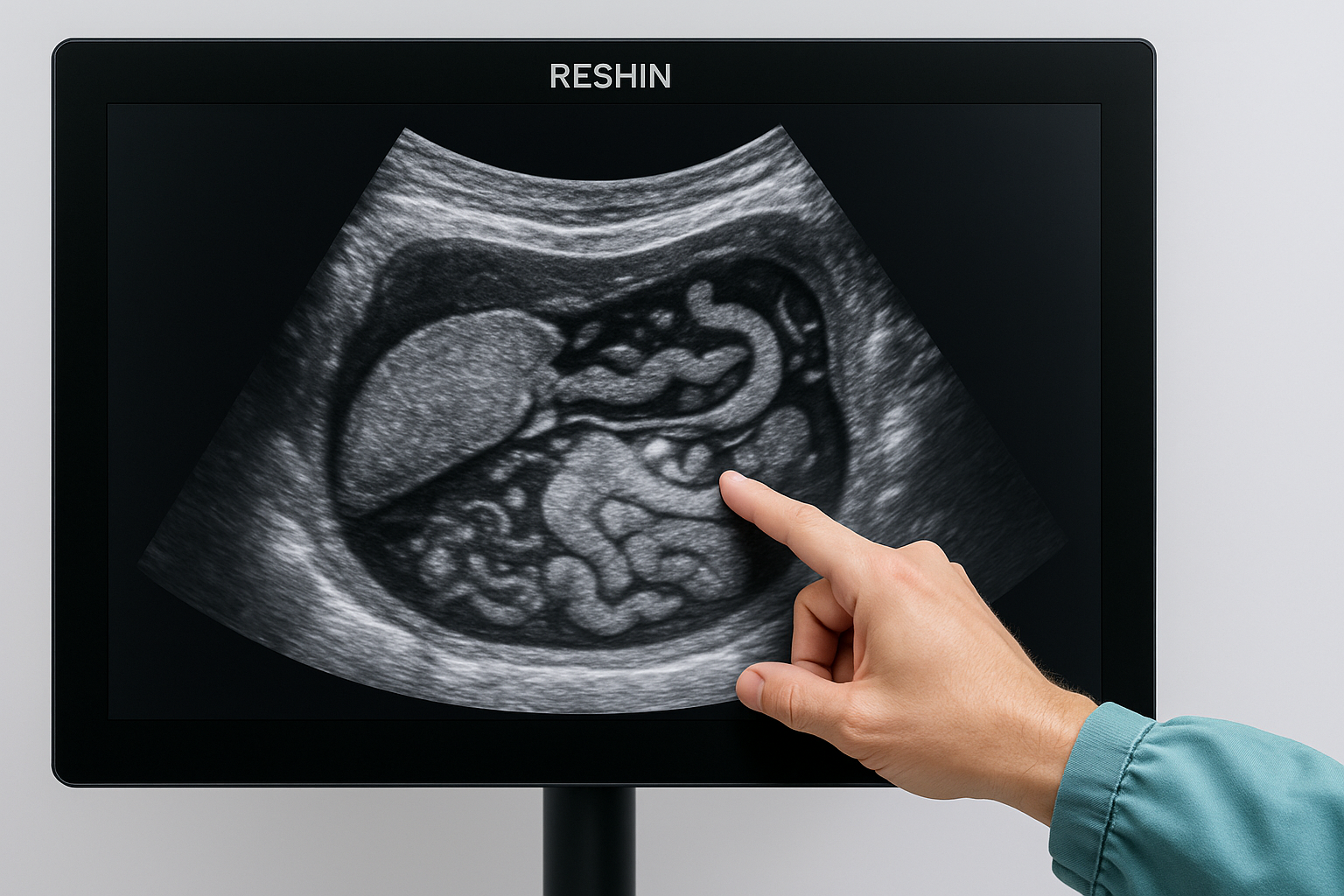
Adapting to the diverse world of non-human anatomy requires specific display capabilities. Animals vary tremendously in size, tissue density, and anatomical structure. Our surgical monitors are designed to provide the clarity needed for these variations. For example, a monitor like the MS275P, with its 4K resolution, offers an incredibly detailed image. This is vital when a surgeon is performing a minimally invasive procedure on a small patient, where the field of view is magnified and every pixel counts. The high pixel density ensures that even minute structures are rendered sharply, reducing eye strain and improving diagnostic accuracy. Furthermore, compatibility with the DICOM Part 14 grayscale standard is important, particularly when reviewing pre-operative or intra-operative radiographs or CT scans alongside live surgical video. This ensures that grayscale images are displayed with consistent and perceptually linear brightness levels, allowing for accurate interpretation of subtle density differences in bone or soft tissue. The ability to accurately represent these nuances is critical for precise surgical navigation and for making informed intraoperative decisions, whether it’s identifying the margins of a tumor or placing an orthopedic implant with precision. This focus on detailed and accurate representation makes our monitors versatile tools for a wide range of veterinary imaging applications.
Enhancing Visualization of Diverse Tissues
Different animal tissues reflect and absorb light differently. Our monitors account for this.
- Advanced Image Processing: Algorithms enhance detail and contrast, making it easier to distinguish between similar-looking tissues.
- Wide Color Gamut: For procedures where color is a key indicator, such as assessing tissue perfusion, a wide color gamut ensures accurate representation.
Specific Applications in Veterinary Imaging
Our monitors excel in various veterinary imaging scenarios.
- Endoscopy: Clear visualization of internal organs and cavities is crucial. High resolution allows for the detection of subtle lesions.
- Ultrasound: Displaying dynamic ultrasound images with clarity helps in guided procedures and real-time assessments.
- Fluoroscopy: During orthopedic or interventional procedures, sharp imaging of bone and contrast agents is essential for guidance.
The careful engineering behind our displays ensures they provide meaningful visual information, regardless of the species or the specific anatomical region being examined.
Are Reshin monitors durable enough for veterinary OR conditions?
Veterinary ORs can be unpredictable. Equipment needs to withstand spills, bumps, and frequent cleaning. Are our monitors built to last in such demanding environments?
Yes, Reshin monitors are designed for durability. Features like laminated Anti-Reflective (AR) glass and IP-rated sealed designs offer strong resistance to contamination, physical impact, and harsh cleaning chemicals common in veterinary ORs.
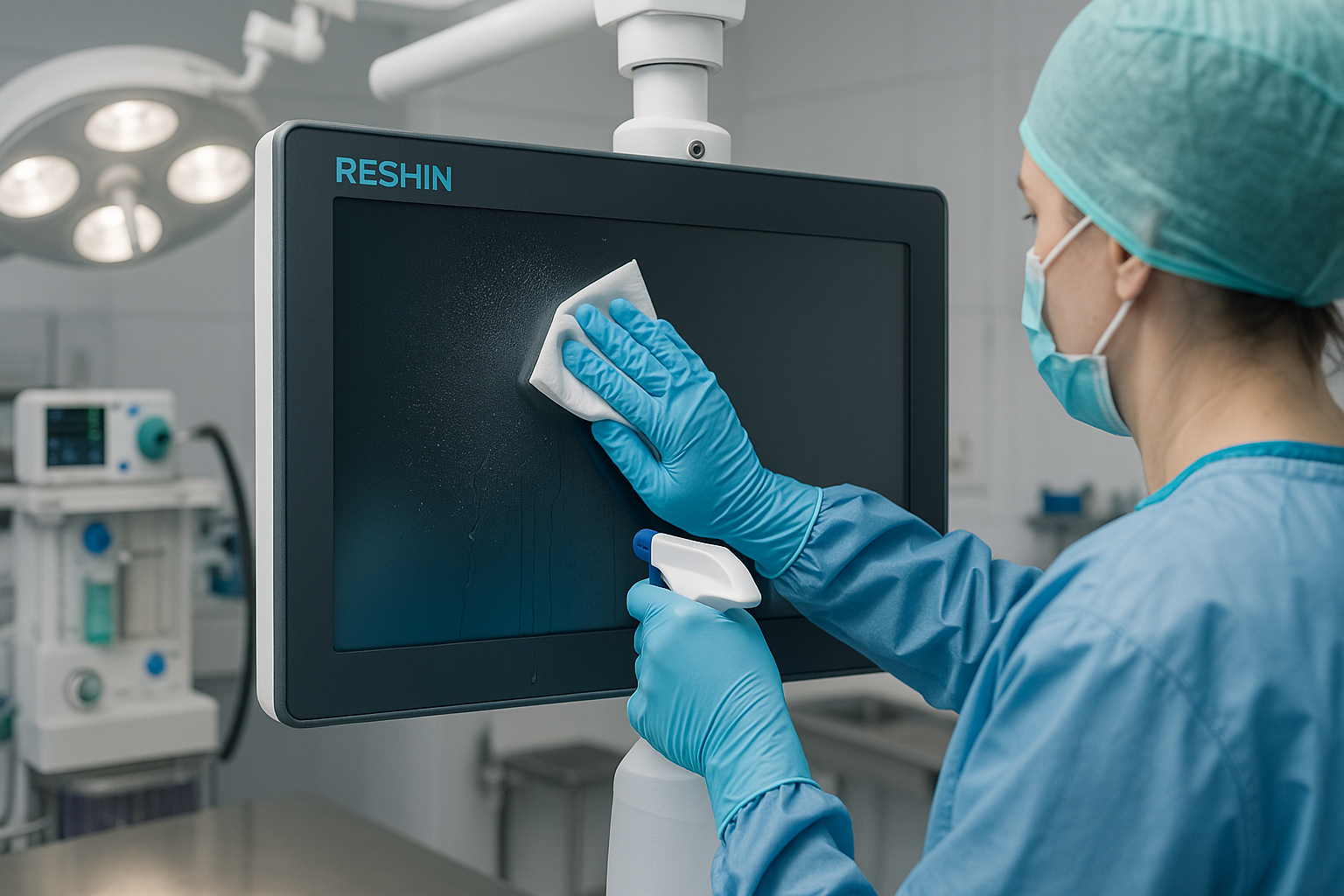
The veterinary operating room environment often presents more unpredictable conditions than its human counterpart. The presence of animals means a higher likelihood of accidental fluid splashes, potential for equipment to be bumped, and the necessity for rigorous cleaning and disinfection protocols using strong chemicals. Our surgical monitors are engineered with these realities in mind. The use of laminated AR (Anti-Reflective) glass is a key feature. This not only reduces glare for better visibility but also adds a significant layer of protection to the screen panel itself. It’s more resistant to scratches and can withstand minor impacts better than standard glass. Furthermore, many of our models, such as the robust MS321PB, feature IP (Ingress Protection) ratings2. This certification indicates a sealed design that prevents dust and liquids from entering the monitor’s housing. This is crucial for infection control, as it allows for thorough cleaning and disinfection without risking damage to the internal components. The ability to withstand repeated cleaning with veterinary-grade disinfectants3 ensures that the monitor remains a safe and reliable part of the surgical environment for its entire lifespan. This robust construction minimizes downtime and repair costs, which is an important consideration for busy veterinary practices.
Construction and Materials
The physical build quality is central to durability.
- Sealed Enclosures: Front-sealed designs, often meeting IPX1 or higher ratings, protect against liquids from splashes or cleaning.
- Impact Resistance: The use of toughened glass and robust casing materials helps to protect against accidental bumps.
- Chemical Resistance: Surfaces are designed to withstand common veterinary disinfectants without degrading or discoloring.
Maintaining Performance in Tough Conditions
Durability is not just about surviving; it’s about performing consistently.
- Fanless Designs: Some models feature fanless cooling4, reducing the intake of dust and animal dander, which can accumulate in equipment with fans, potentially leading to overheating or requiring more frequent internal cleaning.
- Stable Mounting: Secure VESA mounting options ensure the monitor remains stable even if the surgical table or boom arm is adjusted or accidentally jostled.
These design considerations ensure that our monitors can handle the daily rigors of a busy veterinary practice, providing long-term reliability.
What features make Reshin displays beneficial for veterinary surgical teams?
Efficient teamwork is vital in surgery. Multiple staff often need to view the screen. What specific features of our monitors facilitate collaboration and ease of use?
Reshin displays offer multiple input interfaces (HDMI, SDI, DP) for easy connection to various devices. Adjustable mounts and wide viewing angles support team coordination by enabling clear multi-person monitoring during procedures.
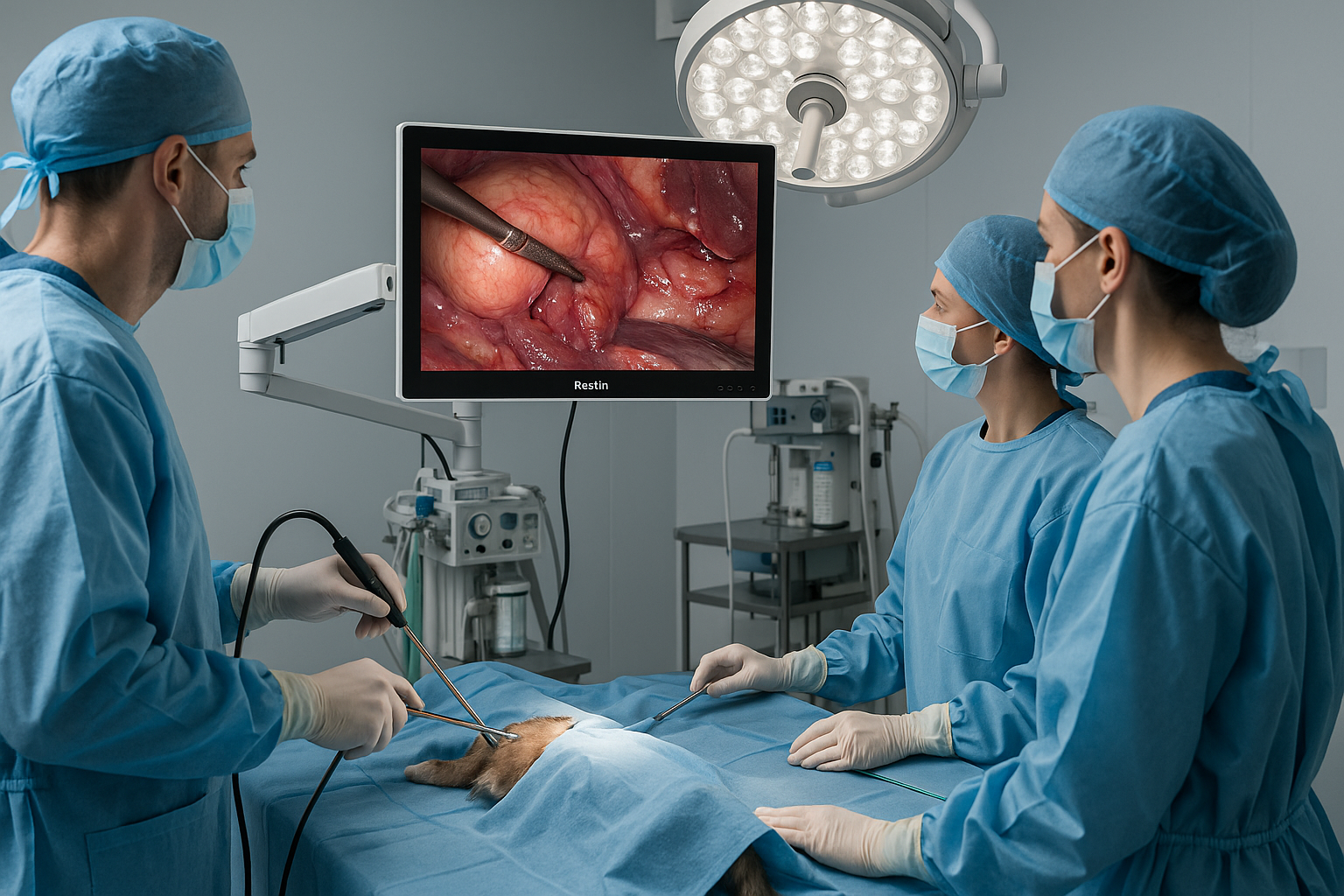
For veterinary surgical teams, seamless integration and collaborative viewing are essential. Our monitors are equipped with a comprehensive range of input interfaces, including HDMI, SDI, and DisplayPort. This versatility ensures that the monitor can easily connect to virtually any imaging device found in a modern veterinary OR, from endoscopes and surgical cameras to C-arms and ultrasound machines. This plug-and-play capability simplifies OR setup and reduces the need for multiple adapters or converters. Beyond connectivity, features like the wide viewing angles offered by our panels, such as those on the MS430PC, are critical for teamwork. In many veterinary surgeries, multiple team members – the surgeon, assistants, and technicians – need to see the display clearly from different positions around the operating table. Our monitors maintain color and contrast consistency even when viewed from off-center angles, ensuring everyone has the same high-quality view of the surgical site. Adjustable mounting options further enhance ergonomics and team viewing, allowing the monitor to be positioned optimally for the specific procedure and team configuration. Some models also offer picture-in-picture (PIP) or picture-by-picture (PBP) functionalities, allowing simultaneous display from two different sources, which can be invaluable for complex cases or when referencing pre-operative imaging alongside the live surgical feed.
Supporting Team Collaboration
Effective teamwork relies on shared, clear information.
- Wide Viewing Angles5: Our IPS panels or similar technologies ensure that the image remains clear and colors accurate even when viewed from the side, allowing multiple team members to see critical information.
- Flexible Mounting6: VESA compatibility allows for various mounting solutions, including ceiling booms, wall mounts, or cart-based systems, adapting to the layout of any OR.
- Intuitive User Interface7: Easy-to-navigate on-screen display menus allow for quick adjustments to brightness, contrast, or input source without disrupting the surgical workflow.
Enhancing Workflow Efficiency
Streamlined operation saves time and reduces complexity.
- Multiple Inputs: The ability to connect and switch between different video sources (e.g., endoscope, room camera, PACS images) provides flexibility.
- Customizable Layouts: Features like Picture-in-Picture (PIP) or Picture-by-Picture (PBP) can display multiple sources simultaneously, aiding complex procedures or teaching.
- Quick Boot-up Time: Monitors that are ready to use quickly minimize delays at the start of procedures.
These features collectively contribute to a more ergonomic, efficient, and collaborative surgical environment for veterinary professionals.
Has Reshin been adopted in veterinary or animal research environments?
Real-world application is the ultimate test. Have our monitors proven their value in actual veterinary or animal research settings beyond theoretical suitability?
Yes, Reshin monitors are already being used in some veterinary hospitals and academic animal research laboratories. They support small-animal surgery and pathology image review, enhancing diagnostic accuracy and workflow efficiency in these specialized fields.
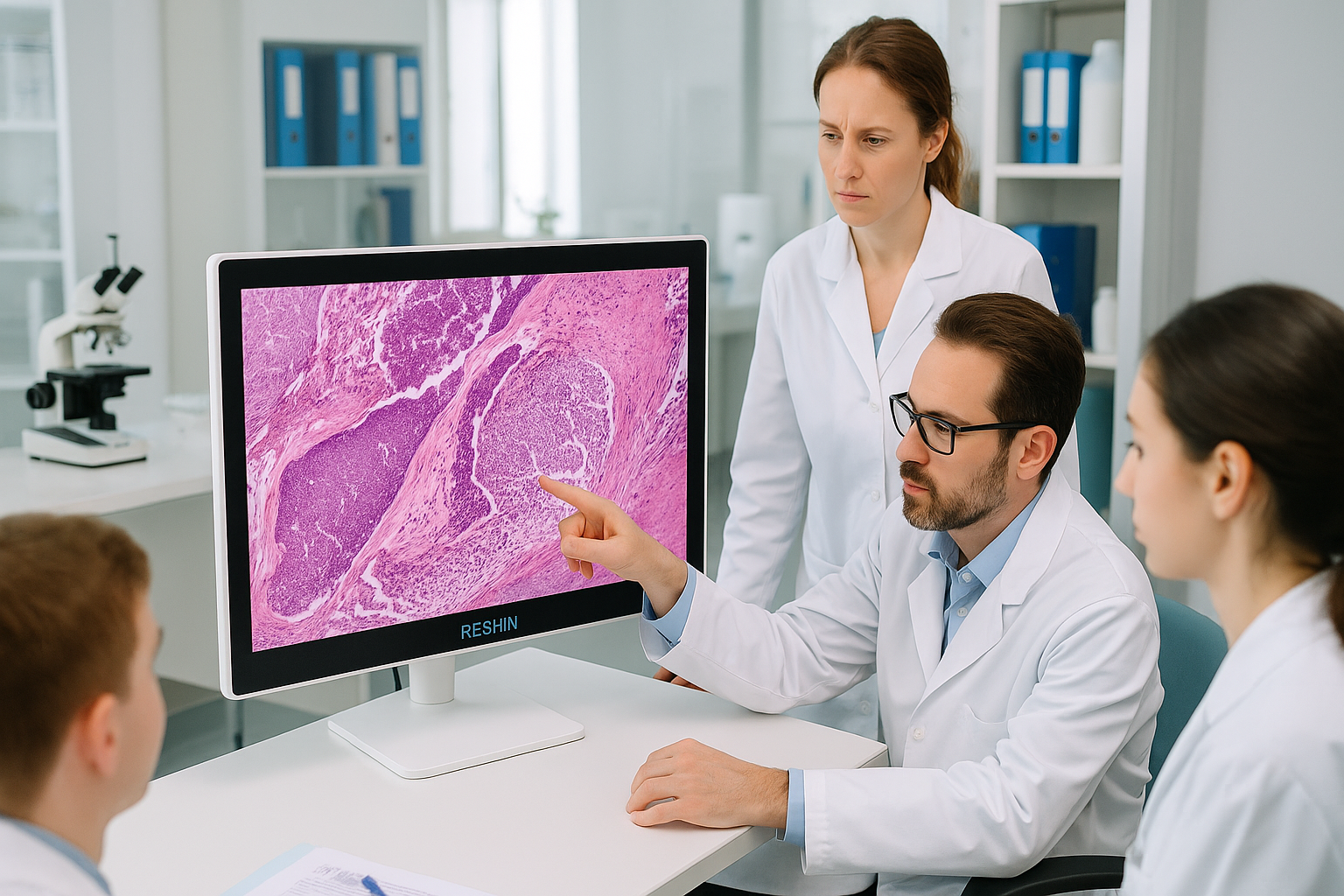
The true measure of a monitor’s suitability is its performance in real-world settings. We are pleased that our surgical and diagnostic monitors8 have found a place in various veterinary hospitals and animal research facilities. In these environments, they are utilized for a range of applications, from live surgical visualization during intricate procedures on small animals to detailed image review in pathology labs. For instance, veterinary surgeons performing minimally invasive surgeries report that the high resolution and clarity9 of our displays allow for better tissue differentiation and more precise instrument handling. This directly contributes to improved surgical outcomes and potentially shorter procedure times. In academic research labs, our monitors are used for tasks such as analyzing microscopic samples, reviewing diagnostic images from modalities like MRI or CT, and documenting experimental procedures. The consistent image quality and color accuracy are vital for ensuring reliable data collection and interpretation in research. The feedback we receive highlights the enhanced diagnostic confidence10 and improved workflow efficiency that our monitors bring to these demanding fields. This adoption by professionals in both clinical veterinary practice and animal research underscores the versatility and reliability of our display technology for non-human applications.
Case Examples and Applications
Observing use in practice provides valuable insights.
- Small Animal Surgery: High-definition monitors are crucial for delicate procedures in companion animals, where precision is paramount.
- Equine Arthroscopy: Large, clear displays help surgeons navigate joints in larger animals.
- Pathology Review: Accurate color and grayscale reproduction are essential for examining tissue samples and making diagnoses.
- Academic Research: In university veterinary programs or research institutes, our monitors support a wide range of imaging needs, from basic research to advanced surgical training.
Feedback from the Field
User experiences shape our understanding.
- Improved Diagnostic Confidence: Clearer images lead to more confident assessments.
- Enhanced Surgical Precision: Better visualization allows for finer control during operations.
- Streamlined Workflow: Reliable and easy-to-use monitors save time and reduce frustration.
The positive reception in these specialized environments confirms that our technology effectively addresses the visual demands of veterinary medicine and animal research.
Conclusion
Reshin surgical monitors offer the clarity, durability, and specialized features essential for demanding veterinary surgical and research environments, improving procedural accuracy and workflow. To find the ideal display solution for veterinary or research applications, contact Reshin at martin@reshinmonitors.com.
-
Understanding high pixel density can enhance surgical precision and patient outcomes in veterinary practices. ↩
-
Understanding IP ratings is crucial for ensuring the durability and safety of veterinary equipment in challenging environments. ↩
-
Exploring veterinary-grade disinfectants helps ensure the safety and hygiene of surgical environments, crucial for animal health. ↩
-
Learning about fanless cooling can reveal how it enhances equipment longevity and performance in veterinary practices. ↩
-
Explore how wide viewing angles enhance teamwork and visibility in veterinary surgeries, ensuring all team members see critical information clearly. ↩
-
Learn about the advantages of flexible mounting solutions in ORs, allowing for optimal monitor positioning and improved surgical efficiency. ↩
-
Discover the significance of an intuitive user interface in surgical monitors, facilitating quick adjustments and enhancing workflow during procedures. ↩
-
Explore how surgical and diagnostic monitors enhance veterinary practices and improve patient outcomes. ↩
-
Learn about the significance of high resolution and clarity in surgical monitors for better precision and outcomes. ↩
-
Discover how advanced monitors contribute to increased diagnostic confidence in veterinary settings. ↩

